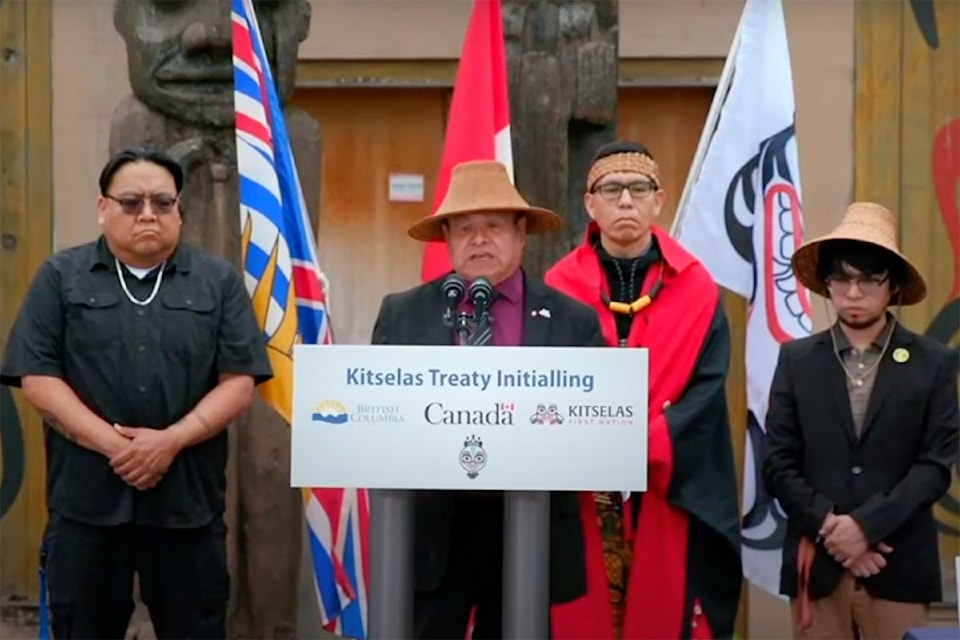Three decades after formal negotiations started, representatives from Kitselas First Nation have initialized a draft treaty agreement with Canada.
But it will take a few years to get the agreement fully over the finish line.
"I'm hopeful that today's occasion will make a turning point for our people and be a positive note for our own history," Kitselas Chief Glenn Bennett said before initialling the agreement.
The First Nation has about 740 members. Its territories lie mostly along either side of the Skeena River in a narrow valley northeast of Terrace with some near Lakelse Lake and Port Essington.
At the heart of the agreement lies a fee-simple transfer of 38,250 hectares to Kitselas from B.C. as recognized treaty lands. Ottawa is supplying most of a one-time transfer of almost $110 million, with B.C. providing some funding for economic infrastructure development.
The agreement frees Kitselas First Nation from the authority of the Indian Act without replacing or extinguishing existing rights under the Canadian constitution. It confirms the Kitselas First Nation' ownership of treaty lands; recognizes the Nation's self-governing powers; and gives it law-making authority on its treaty lands in many areas previously under federal or provincial jurisdiction. Such as areas include education, health and child and family services. It also gives the Nation authority over economic resources on its treaty lands.
"We have identified through this treaty some resources that may be developed, whether it be in the forest industry, the mining industry, through our water resources, fisheries (and so on) to achieve self-reliance," Bennet said. "It will be on us to identify how to engage in the business market to do this."
Bennett added that the treaty (assuming ratification) gives Kitselas First Nation "more confidence and energy" to move forward on its own terms, noting success now lies in the hands of the nation itself.
"But one thing is certain," he said. "This is one more step forward away from the repressive, outdated Indian Act and its representatives."
According to a technical briefing, the vast majority of the Kitselas land remain accessible to the public for non-commercial recreation.
Gary Anandasangaree, federal Minister of Crown-Indigenous Relations, said the agreement represents modern treaty-making.
"I am so excited for what this treaty can bring to your nation," Anandasangaree said. "You will determine the best path for your government that best suits your nation's needs and aspirations and the types of laws and governing institutions you will build."
While Anandasangaree warned against overnight changes, he held out the agreement as a model.
"(Modern) treaties enable us to undo colonial policies and move forward in a new way to based on respect, on partnership. Notably, this is a living agreement. It sets the foundation for an evolving nation-to-nation relationship, rather than closing a relationship."
Monday's ceremony concluded formal negotiations. The agreement now goes before the Kitselas' membership for review and ratification, with the first week of April 2025 being a target date. Coinciding with this process is the development of a constitution by which the Kitselas First Nation will govern itself.
Victoria and Ottawa must then ratify the agreement through separate legislation, which essentially — in the words of B.C.'s Minister of Indigenous Relations and Reconciliation Murray Rankin — amend the Canadian constitution.
"It's not for the faint of heart," he said. "It's a major step."
Ultimately, the treaty could come into effect by 2028 at the earliest.



